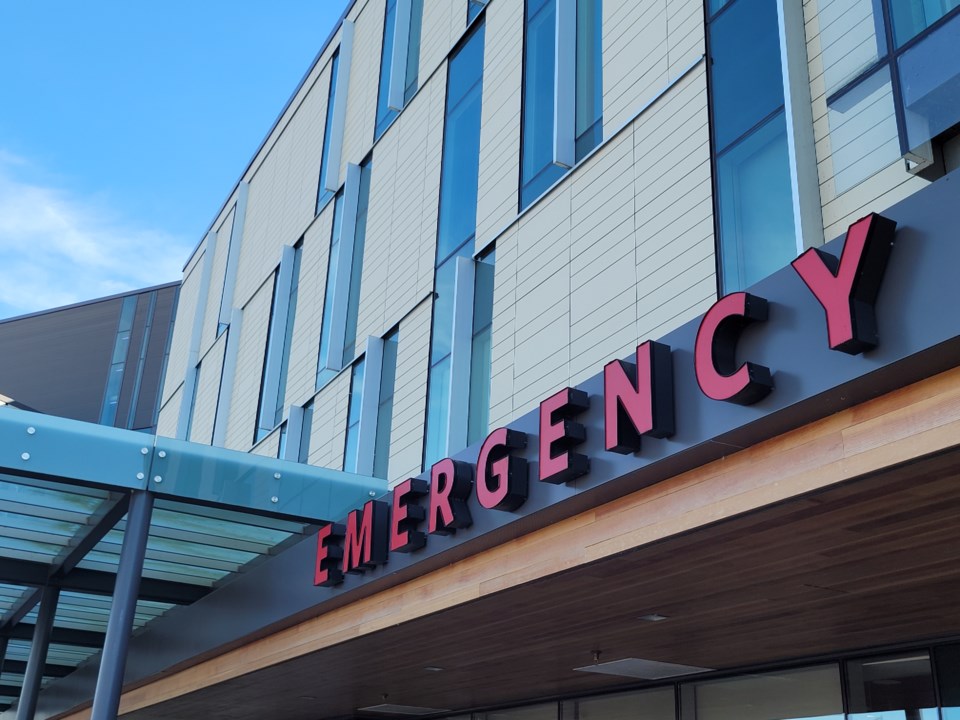Anyone seeking non-life threatening medical care at the emergency room in Cambridge Memorial Hospital should be prepared to wait.
Michelle Goodridge learned that the hard way over the holidays.
Goodridge had been sick for six days and with her doctor off and urgent care not open, she decided to head to the hospital.
"Usually I would just tough it out but I was worried I was really dehydrated," she said.
"My husband dropped me off, I was triaged and had blood work done."
Before going, Goodridge checked out the wait times online at various hospitals in the region and with CMH being around six hours, it was the best option.
But while waiting for her blood work results, a nurse entered the emergency room to announce the wait time could be anywhere between 10 and 18 hours.
"I was defeated, there’s no way I was going to sit there for 10 to 18 hours," she said.
"A lot of people sighed and many got up and left. One woman joked she could go home, go to sleep, come back and then maybe her name would be called."
According to hospital data, current wait times for non-emergent patients is around 8.3 hours for a physician initial assessment, with nine out of 10 people being seen within that time. It's a 20 per cent rise over the pre-holiday period.
From Dec. 26 to Jan. 8, the number of people heading to the ER per day increased from 121 to 127, with those being admitted up to 17 per day. The number of discharges was hovering around 0.88 a day.
With only so much capacity available, that math simply doesn't equate.
Add in the fact patients are coming in with higher acuity, or more sick, and it's all a recipe for disaster.
Maddie Gardiner, a nurse in a CMH telemetry unit that receives patients from the ER, experiences the stress of high workloads every shift.
"I think certain people don't understand how the hospital works," Gardiner said.
"For instance, we only have 10 telemetry monitors, so if you're waiting for one you can't get a bed until we take someone off. I don't think we have enough doctors and I don't think we have enough nurses."
Gardiner also points to the fact that nurses are often specialized and moving from department to department isn't always as helpful as some may think.
Several other aspects, both internal and external, including a lack of family physicians in the city, limited hours for urgent care and long-term care home backlogs are impacting the long lines and testing people's patience.
"We have patients that are waiting for long-term care homes waiting in crisis placements," Gardiner said.
"They're medically stable but they don't have anywhere to go. They can't go home because they can't function on their own. We don't have enough home care, so we have to send them to assisted living where there are no spaces."
All these factors create a bottleneck into the hospital and puts increased pressure on the system, with hallway medicine beginning to make a comeback in some cases, Gardiner said.
"We wheel a bed into the hallway across from a bathroom but there's no privacy," she said.
"There's no oxygen or suction options because we don't have a room set up. It's a bed against the wall. That's really hard on me because sometimes we have patients that are crying all the time and I have to tell them this is where they have to stay."
Both Goodridge and Gardiner don't place blame on the staff within the hospital, as both understand the excessive volume and workload at play.
When it comes to why patients come into the hospital in worse shape than what's been seen previously, that remains a mystery.
"I don't know why the acuity is so high, I can’t put my finger on it," Donna Didimos, CMH's director of the emergency department and mental health, said.
"Stretcher capacity and volume coming in is tight."
With numerous issues causing the long wait times, many are left wondering what, or even if, there's a solution.
There's no one quick fix, Didimos said, but it's something hospital management is desperately trying to alleviate.
"We work with emergency medical services almost daily to try and address offload delays," she said in reference to the paramedics and ambulances that are stuck waiting outside the hospital.
"At the end of January, we're working on quality improvement internally in the emergency room. We're aiming to do quality improvement projects based on different areas."
"We have our medicine partners and leadership team working on alternate level of care practices in departments and safer discharges. We're working with community partners and long-term care homes so that way we can have stronger relationships to see where the bottlenecks are."
Didimos is advising people who don't need emergency care to access other avenues, such as walk-in clinics.
As work continues to ease delays and patient frustration, quality care remains the top priority for hospital staff.
"We want to provide the best care for our community," Didimos said.
"We thank patients for being patient with us under a lot of pressure. We hear them and want the best for them."


